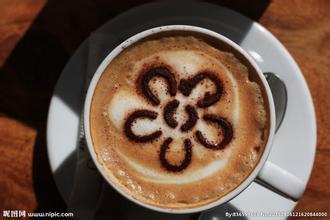Introduction to fine coffee in manor area with meticulous mellow thickness and flavor of Yega Shifeiwaka coffee
There are mainly mountain plateaus in Ethiopia, and the central and western regions are the main part of the plateau, accounting for 2% of the total. The East African Rift Valley runs through the whole territory, with an average elevation of nearly 3000 meters, which is known as the "roof of Africa". The terrain around the plateau is gradually declining. The Darol depression in the north fell to 113 meters below sea level, the lowest point in the country. The coast of the Red Sea is a narrow banded plain. Deserts and semi-deserts in the north, south and north-east account for about 25% of the country's area. Dashan Peak in the Ximen Mountains is 4623 meters above sea level. It is the highest peak in Ethiopia. Ethiopia is rectangular, with a ratio of length to width of 3:2. From top to bottom, it is composed of green, yellow and red parallel equal horizontal rectangles, with the national emblem in the middle of the flag. Since the end of the 19th century, Ethiopia began to use the green, yellow and red cross-striped national flag. In modern history, Ethiopia is the first African country to join the forest of free nations. [8]
In the fifties and sixties of this century, many African countries became independent one after another and adopted green, yellow and red as the colors of the national flag, so they were called "pan-African colors". Ethiopia is one of the ancient countries in Africa, with a long history of more than 3000 years, giving green, yellow and red colors deeper roots in this land. Historically, they are closely related to the liturgy of the Coptic church, and are worshipped as the symbol of the trinity of the Father, the son and the Holy Spirit, reflecting the three virtues of loyalty, hope and kindness advocated by human freedom. These three colors also represent three regions of Ethiopia: Tikleh (red), Amhara (yellow) and Theo (green). Green represents fertile land, mild climate and rich plant resources, but also symbolizes hope for the future; yellow symbolizes peace and fraternity, as well as the people's determination to build the country; red symbolizes that the people are ready to shed blood and sacrifice to defend the motherland.
Flavor: distinctive floral, dry and wet fragrance all have strong citrus flavor, lemon, kumquat, white grape juice and so on in the front, rich sour and sweet citrus in the middle and back, rich sweetness like soda, distinct personality, outstanding, very rare to wash Yega Chuefeiwaka with a cup of water, it is recommended to use 15 grams of powder 89-90 degrees water temperature, gouache ratio 1:15 Medium grinding (small Fuji ghost tooth knife 3.5-4 grinding), V60 filter cup, the first injection of 30g water for 28s-30s steaming, injection to 104g water cut off, wait for the powder bed water to half of the water and then water injection, slow water injection until 230g water, not at the end, the extraction time 2v 12s Yejasuefei coffee tree is planted by European monks (a bit like Belgian monks planting wheat to brew beer) Later, the responsibility was transferred to farmers or co-operatives. Yejia Chuefei is actually constructed by surrounding coffee communities or cooperatives, including Edido Idido, Hafusa Harfusa, Hama Hama and Biloya near Fog Valley Misty valley, all washed with water, but there are also a small number of off-product beans engraved with sun to enhance the charming fruit aroma and mellow thickness. These mountain villages are foggy, like spring all year round, with a gentle breeze in summer, cool but not hot, rain but not damp, and no cold damage in winter, giving birth to a unique regional flavor of citrus and flowers. Coffee trees are mostly planted in farmers' own backyard or mixed with other crops in the field, the yield per household is not much, it is a typical rural coffee. Yega Sheffield award beans almost come from the above-mentioned coffee villages and communities. "Yejashafi" refers to strong aromas of jasmine, lemon or lime acid, as well as sweet or tea aromas of peaches, almonds or tea. On the other hand, the smell of blueberries is particularly prominent this season, and the room is full of blueberries after grinding.
The phrase "coffee entrance, flowers in full bloom" is best described, just as flowers promote the comfort of taste buds and olfactory cells in the nasal cavity. In addition to the flower fragrance, the meticulous mellow thickness body is like silk massage in the mouth. At present, Essel's coffee grading and quality control system mainly has two indicators: visual inspection and cup evaluation. The inspection items include the color, cleanliness, origin, taste and characteristics of coffee beans. The export rating is marked by simple numbers, with the best washed coffee at level 5 and the best sun-cured coffee at level 4. After grading, mark the place of origin and then export. Exports are usually paid by letter of credit, which can not only reduce the risk of foreign exchange collection for exporters, but also give quality assurance to importers.
According to the law, all coffee is sold through an auction held by Addis and DiRedawa. During the coffee harvest, such auctions are even held twice a day.
The export of coffee
Coffee is Ethiopia's most important export cash crop and the main source of Ethiopia's foreign exchange earnings. Ethiopia's coffee exports account for about 3% of the world market, making it the eighth largest coffee exporter in the world. Coffee exports increased steadily from 58000 tons in 1990 to 110000 tons in 1995-1996 and remained at this level in the following years. The export volume exceeded 110000 tons from 2001 to 2002 and reached 127000 tons from 2002 to 2003. As the price of coffee on the international market has been declining for a decade, Ethiopia's foreign exchange earnings have been seriously affected. Before the sharp drop in coffee prices, coffee exports accounted for more than half of Ethiopia's foreign exchange earnings, but now they account for only about 35 per cent. But according to the International Coffee Organization, coffee prices rebounded in 2002, rising from 41 cents per pound in September 2001 to 52 cents per pound in 2002 and 59.7 cents per pound in 2003. The average price in March 2004 was 60.8 cents per pound, an increase of 50% over September 2001.

Important Notice :
前街咖啡 FrontStreet Coffee has moved to new addredd:
FrontStreet Coffee Address: 315,Donghua East Road,GuangZhou
Tel:020 38364473
- Prev

Introduction to the Fine Coffee in the Fruit Flavor Manor of Yegashifei, Ethiopia
In February 1977, Lieutenant Colonel Mengistu Haier Maryam (MENGISTU HAILE MARIAM) launched a military coup and served as Chairman of the interim military Administrative Council and head of State. In 1979, the Ethiopian Labor people's Party Organization Committee, dominated by soldiers, was established to implement an one-party system. In 1984, the Ethiopian Workers' Party was formed according to the Soviet Communist Party model. Mengistu, September 1987
- Next

Salvadoran coffee features Salvadoran coffee flavor
Salvadoran coffee refers to the coffee produced in the small South American country of El Salvador, where the coffee body is light, aromatic, pure, slightly sour, the flavor is extremely balanced, is a specialty of Central America. With sour, bitter, sweet and other taste characteristics, the best baking degree is moderate, deep. In the early 1990s, guerrilla warfare greatly damaged the country's national economy, increasing coffee production from the early 1970s.
Related
- Detailed explanation of Jadeite planting Land in Panamanian Jadeite Manor introduction to the grading system of Jadeite competitive bidding, Red bid, Green bid and Rose Summer
- Story of Coffee planting in Brenka region of Costa Rica Stonehenge Manor anaerobic heavy honey treatment of flavor mouth
- What's on the barrel of Blue Mountain Coffee beans?
- Can American coffee also pull flowers? How to use hot American style to pull out a good-looking pattern?
- Can you make a cold extract with coffee beans? What is the right proportion for cold-extracted coffee formula?
- Indonesian PWN Gold Mandrine Coffee Origin Features Flavor How to Chong? Mandolin coffee is American.
- A brief introduction to the flavor characteristics of Brazilian yellow bourbon coffee beans
- What is the effect of different water quality on the flavor of cold-extracted coffee? What kind of water is best for brewing coffee?
- Why do you think of Rose Summer whenever you mention Panamanian coffee?
- Introduction to the characteristics of authentic blue mountain coffee bean producing areas? What is the CIB Coffee Authority in Jamaica?

